Rich, an old friend of mine, was in town, and we decided to do the classic meet-for-coffee thing.
By default if nothing else, we chose a Starbucks that was easy enough to get to here in
suburban Columbus.
Maybe because I was running behind – or maybe because I can be old school – I didn’t order my
drink ahead of time. I just walked up to the counter, exchanged pleasantries with the barista,
and ordered my hot drink. Then Rich walked in and ordered, and the two of us started talking.
We got caught up in conversation. And before we realized it, 10 minutes had passed.
I started to get at least curious about – if not mildly annoyed by – the fact that while we were
waiting there right in front of three baristas, we still didn’t have drinks.
The baristas weren’t doing anything wrong. In fact, the rate at which they were making frappe
after cappuccino after latte was impressive. The issue was that one of them was taking care of
digital orders that might have been placed before ours, while the other two were handling the
orders flowing in from the massive line at the drive thru.
No one was focused on us customers inside the Starbucks.
Then I looked around. We were about the only people in the Starbucks. And there was no line.
Just people popping in to grab their order-ahead beverage and get on with their day.
Starbucks has changed. Is this change good or bad? Is Starbucks still a third space for aspiring
writers, freelance designers, potential collaborators, and old friends?
Have today’s customers fallen in love with the protocols retailers and restaurants were forced
to implement during covid? Are Americans too in love with their cars to get out of them? Have
Zoom and Teams replaced meeting for coffee?
If Starbucks stops providing the Starbucks experience, is it still Starbucks?
Can the baristas keep up that frantic, machine-like pace? Do customers care if their morning
beverage no longer comes with human interaction?
Where do people go if they miss the personal touch? Will a competitor displace Starbucks?
Starbucks appears to be selling just as much coffee as ever. Should they be worried?
These aren’t rhetorical questions. I’m really looking for answers and your opinions. (It’s also
possible I’m just hoping for confirmation that I haven’t become that guy longing for the
good old days.)
Friday afternoon my wife and I went to Kroger to pick up some groceries. As usual, our small list became a full cart. Kroger is one of the four grocers we shop at but it’s not our regular grocery store. As we walked in, my wife saw a Krogo cart and suggested we try one.
In case you aren’t familiar with it, KroGo uses a smart cart from Caper. On the top of the carts are a small tablet sized display and scanner. A shopper picks up an item off the shelf, scans the item barcode, the scanner reads the barcode and adds the item price to the order which is tracked on the tablet display. The display which shows a running tab of items and price on the display. If you have used an Amazon or other smart cart, they are all about the same.
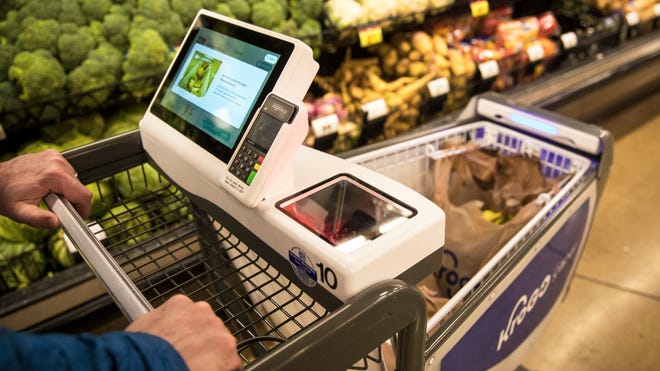
Make it Ridiculously Easy
We started in fruits and veggies and it worked just fine. We then put a four-pack of Cut Water (Tequila Paloma, my wife’s favorite) through the process, but the scanner wouldn’t read it (likely an age restriction thing).
When I realized some eggs were on sale, I punched my loyalty number in on the cart display but I needed to have clipped the digital coupon to get the sale price. I didn’t have time for that, and didn’t know my loyalty password, so I moved on.
How do we check out?
There was a sign over both self-checkout aisles that read Self-Checkout & Krogo. The area was pretty busy (Friday afternoon) and we couldn’t tell where to go or what to do once we were under the sign.
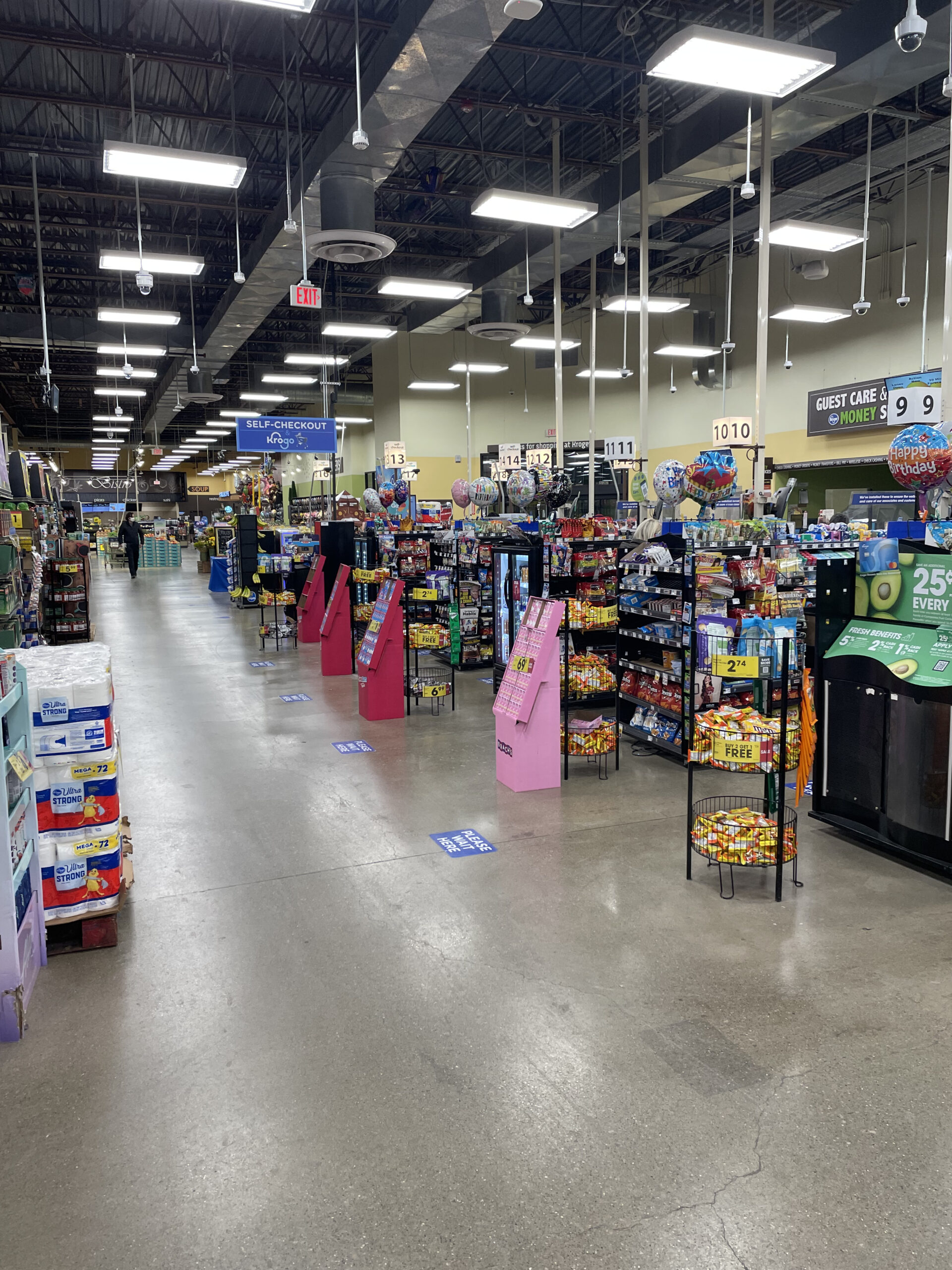
There was no other indication for Krogo and no associate to help us. The Kroger associate stationed there was helping another shopper with her order at a self-check machine at that moment.
We stood there, I am sure looking a little confused, for a solid 3 minutes. All, while letting other shoppers behind us go through the self-checkout process. We walked to the other side of the self-checkout but it was a product display, not a Krogo checkout area.
When the associate finally finished helping the other shopper, we asked for help. We told her we needed to pay but that our Cut Water wouldn’t scan and that we needed help getting the coupon for the eggs on sale. She had me scan the Cut Water and eggs at the self-checkout scanner. Once that transaction was complete, we paid for the other groceries using the Caper system on the cart.
As we were walking away, my wife said that was a “waste of time”, we should have just used a regular cart.
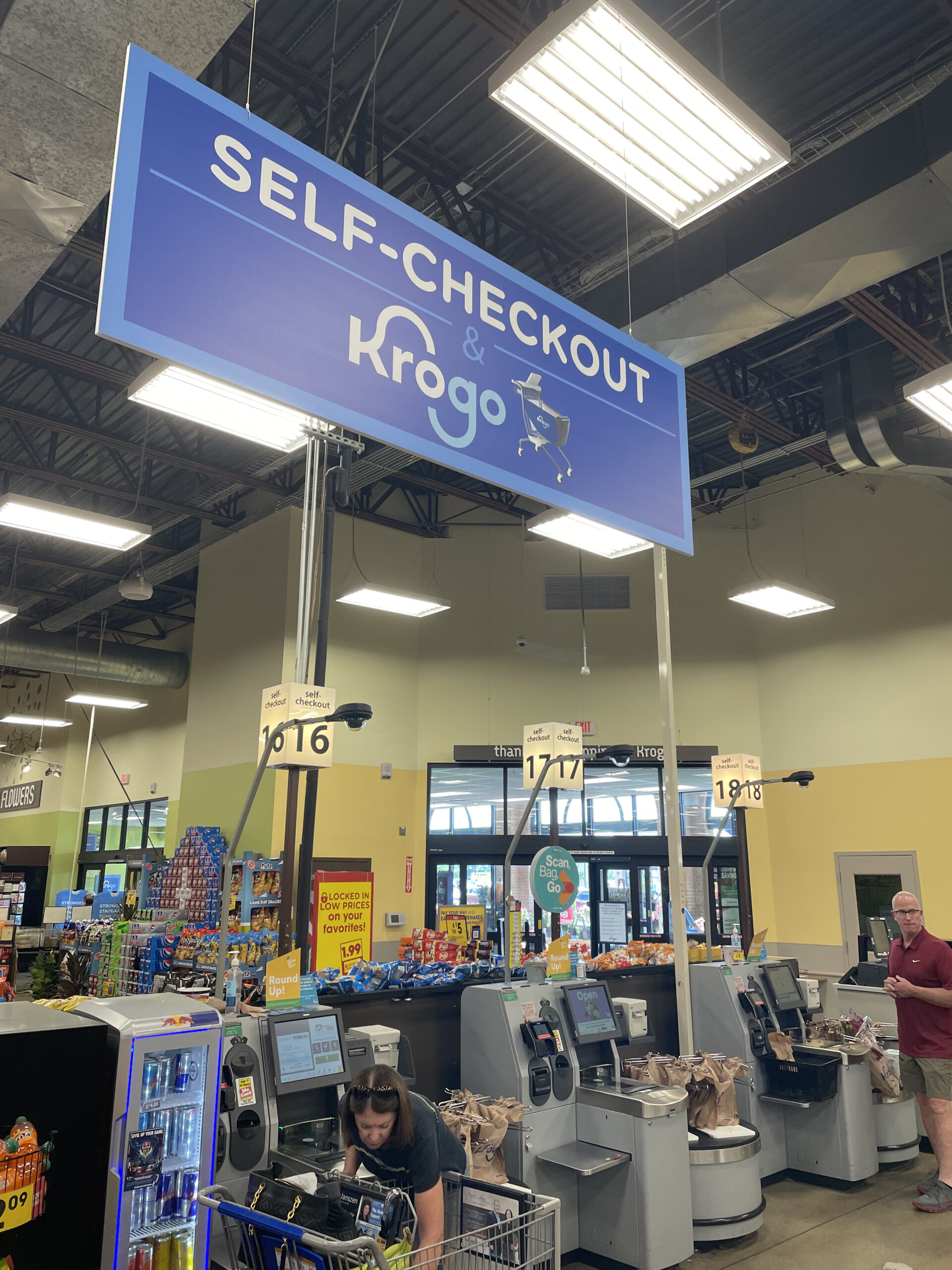
Frustrations Minor and Major
The experience left a bad impression on me and, more importantly, my wife. My biggest frustration wasn’t the Cut Water issue, that happens. It was the lack of focus on overall customer experience.
Minor.
I needed to pull my phone out to figure out the digital coupon issue. There is a display on my cart, I am logged in, I hadn’t seen the coupon until I was standing in front of the eggs. The friction was completely unnecessary. Make it easy for me to get the lowest price, period. That’s an issue beyond Krogo. Maybe I’ll cover that in another post.
Major. Someone at Kroger thinks a single giant Self-checkout Krogo sign over self-checkout is enough for people. It’s not. If I stood there, looking around for some indication of what to do, there is no doubt, others have the same problem.
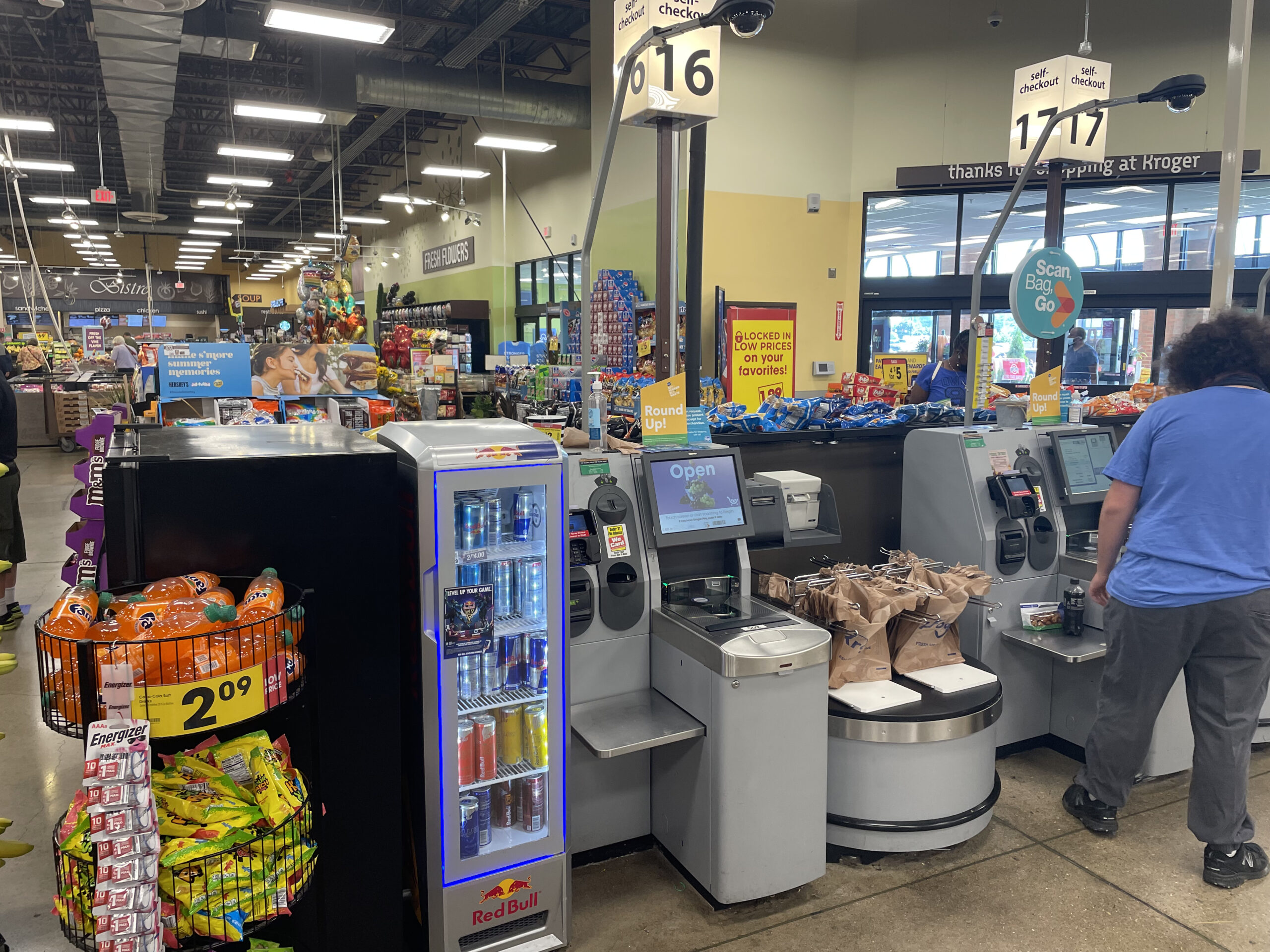
Did Kroger observe any shoppers going through this experience? Does anyone at headquarters even know any of the frustration points during this process? Will they consider this test a success? A failure? Will they know why? What were their goals? What are their success metrics?
Since I have worked on many front end design projects, run multiple research studies and completed digital-retail integration projects for major retailers, I am hypersensitive to retail experience. My wife wouldn’t have even tried KroGo if I wasn’t with her. But now that she has, she’ll likely never use that cart again.
Human-Centric Design
Issues expand beyond the technology friction. It’s clear a user-centered approach wasn’t applied because when we went to put the cart away in the parking lot, there was no signage at the cart corral. These carts seem special, it seemed odd to leave them with others in this hot mess of a cart corral. My wife walked the cart back into the store because she didn’t think it would be good for this “smart cart” to be left outside. Surely that’s not what Kroger intended. A user-centered approach would have led to signage that indicated it was okay to park the smart cart in the corral… or a notification on the cart that said, please return to the store.
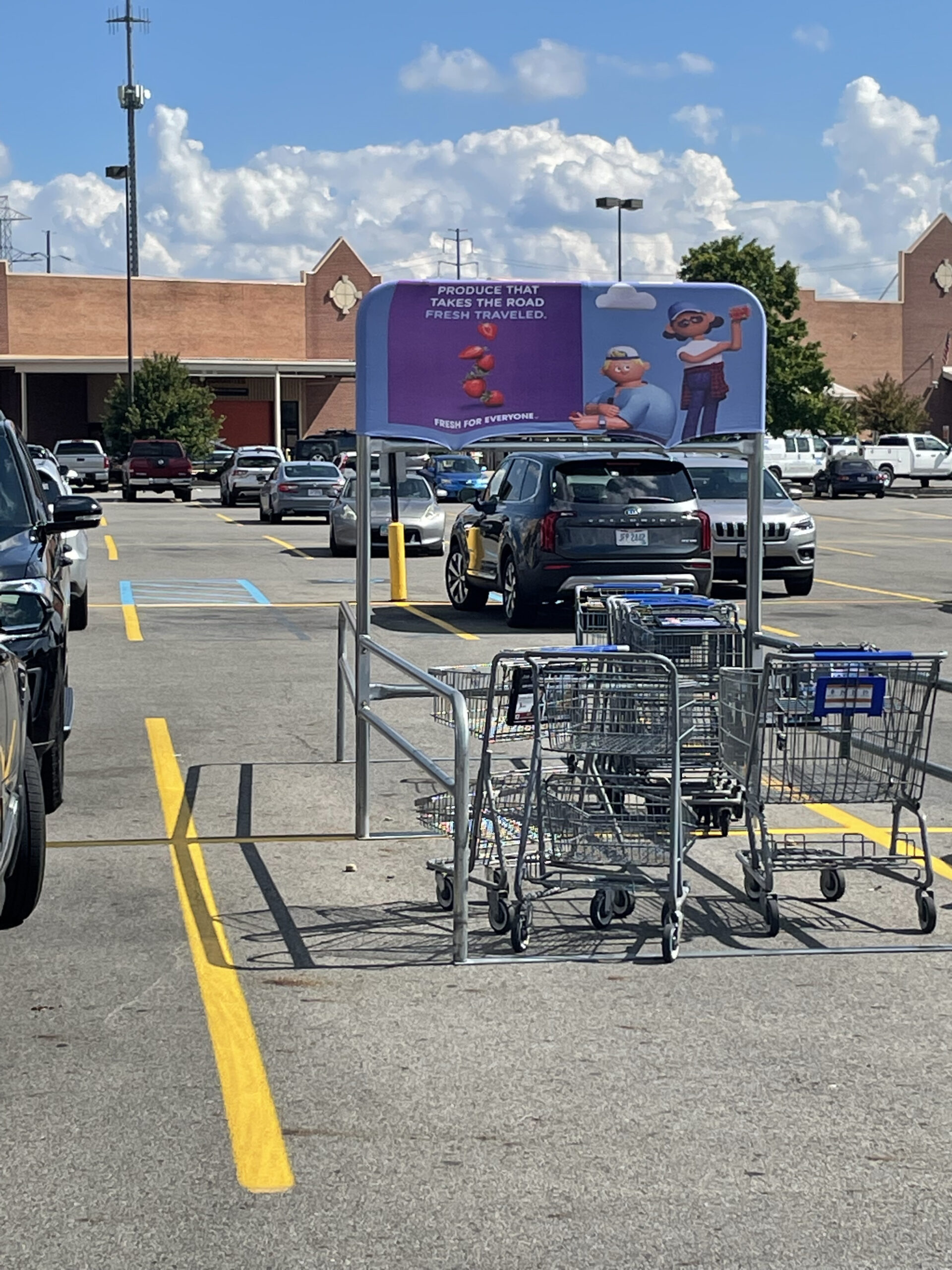
Human-Centric Approach
My recommendation on these types of projects is to use a design team who has experience in human-centered design. Consider the shopper’s journey and observe how shoppers interact with self-checkout today. Run some tests in a controlled environment and observe shopper unmet needs and pain points. And then design around those learnings.
If you are deploying a technology project and let technology lead, don’t. In my opinion, this was a technology-led project with little consideration of the shopper’s store experience beyond the cart. The shopper-need should lead. The total shopper journey is what you should design for.
Below are considerations for your next experience project:
Put the user at the center of your experience (get in their shoes)
Understand your shopper’s journey. Identify the unmet needs and areas you can improve their experience
Walk the pilot store and observe initial interactions with an experience, ideally by then you’ve worked out major kinks
If you are deploying technology, don’t let it be the lead
Never assume shoppers know what to do
Signage can make a difference. You don’t think people read, but signage is the first thing customers look for if something is confusing
If you don’t set up the test well, don’t discount poor results as indicative of bad technology or a bad idea
Would love to hear your experience with KroGo and whether it was better or worse than ours. Once someone tries it and is familiar with it, it is likely easier. However, setting hurdles like this do not do smart technologies any favors.
We are rapidly approaching our four year anniversary at PINE. It has been an amazing time of personal and professional growth. In planning for the future, we have been reflecting on why we have seen successes and where we can continue to grow and evolve.
Why Us?
One of the questions we asked ourselves is why do companies hire PINE? Understanding strengths and weaknesses always helps to determine and communicate your competitive advantage. Sustaining and communicating this advantage is always a challenge.
The number one reason people hire us is a referral, even if they don’t understand our value as articulated below, they refer us based on the meaningful impact our thinking has had and can have on their business; referrals have been the cornerstone of our business.
Articulating Value
Articulating this valued outcome to an entirely new group is much harder in practice. We have our core pillars; questions before answers, willingness to question, transparency and trust and whole mind (left and right brain) thinking. This coupled with a portfolio of great clients and projects have often been enough. However, we know that the world is constantly changing and the competition and expectations never rest, so we decided to dig in and look deeper.
We firmly believe there is something unique. Simply put, we believe we look at things distinctively differently. Our personal philosophies of embracing life and situations with genuine curiosity and questioning assumptions (BEGINNER) and applying a combination of a broad set of experiences (SAGE), what we call a Beginner-Sage Mindset.
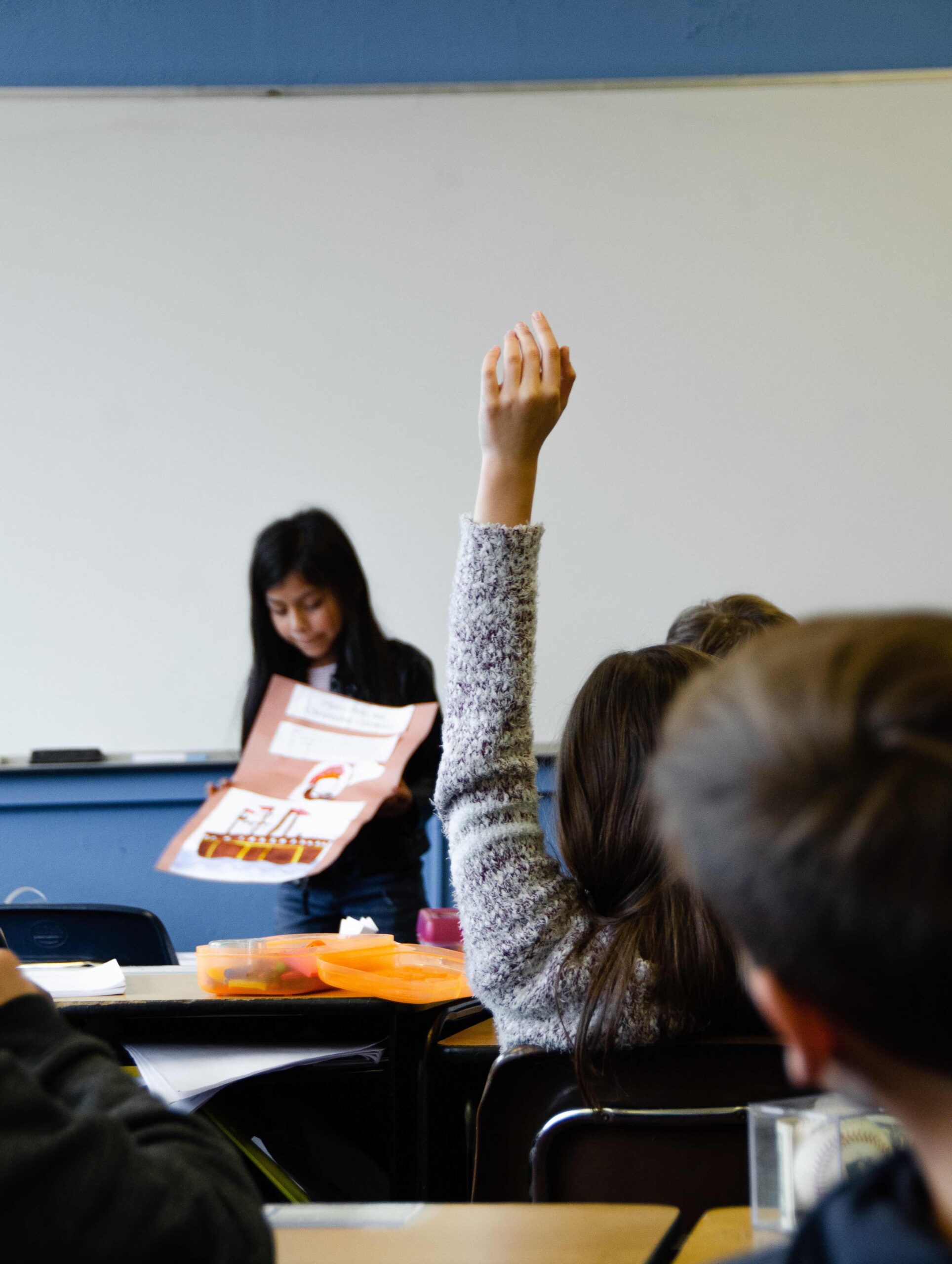
A beginner’s mindset, a philosophy observed by Shunryu Suzuki (1904–1971), a Zen monk, teacher, and author of the book Zen Mind, Beginner’s Mind relishes uncertainty. It is to not burden oneself by the way things should be.
A sage, in classical philosophy, is someone who has attained wisdom.
We believe creating and fostering the constructive tension between these two perspectives, the Beginner and the Sage has been the key to our unique approach and has had a broad impact on our work. A hungry appreciation for questioning assumptions and a respect for the wisdom gained by experiencing many inputs across our careers and clients, has helped us succeed.
To the Future
As we continue to think about and evolve how PINE can best serve our clients, we look forward to a future sparked by enthusiastically embracing the many new situations that lie ahead as beginners while being guided by the wisdom from our pasts.
Cheers.
Ecommerce finally moves forward
Ecommerce may be finally stepping into a new era. In 1999, a group of colleagues and I built an ecommerce site for a wallpaper retailer. Sadly, not much on the front end design of Ecommerce sites has changed since then; scroll down, find a product, add to cart and keep shopping. Yawn… wake me when it gets fun. Innovation for the most part has been focused on the backend with the obvious goal of selling stuff as quickly and easily as possible.
Personalization comes to life…
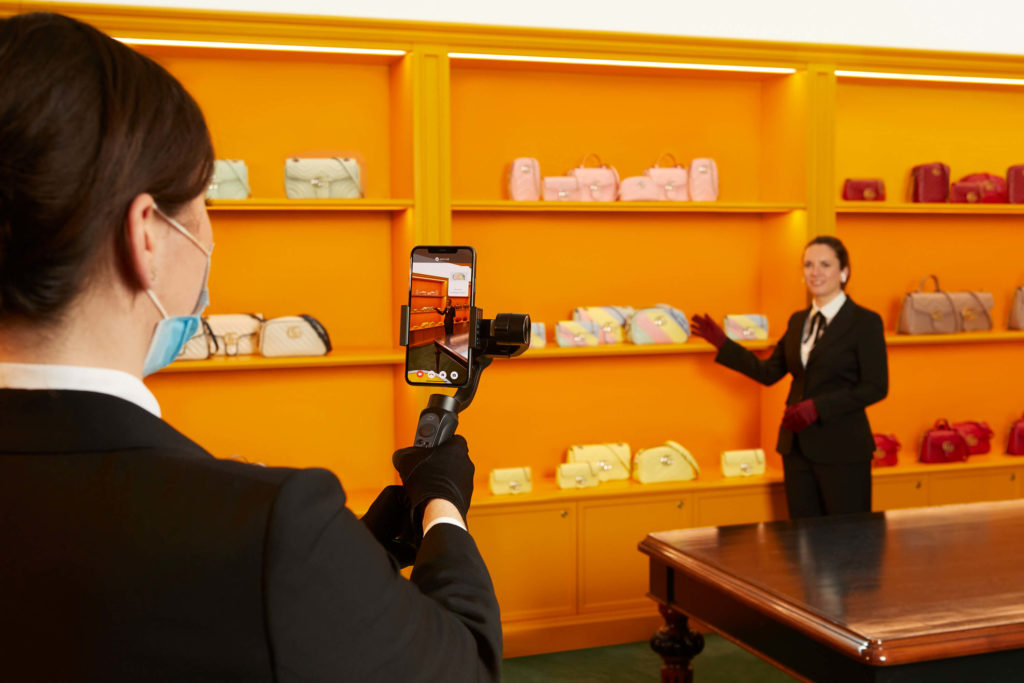
However, Gucci’s new personalized video shopping may have just changed all that (No yawn)! Ecommerce efforts in social media (Pinterest, Instagram, Tik Tok) have given new hope and life into bringing the emotion back to ecommerce shopping. However they have still not evolved a real-time human connection until now. Gucci’s Live, a new online service brings the advisor to the customer. The new effort allows Gucci to be more present (human) in the lives of its customers, when and where they want it (technology).
Marco Bizzarri, Gucci president and CEO, said in a statement when Gucci 9 opened. “The service is delivered according to the values that define and differentiate our brand today: a human touch powered by technology.”
Democratizing personalization
In the near-term this level of service is a stretch for most mass retailers as they continue to use human associates. Creative ones like Gucci will integrate influencers, major stars, etc and perhaps even charge a premium for exclusive ‘remote’ shopping experiences. However, we ultimately believe this could easily trickle down to retailers like Target.
Positive COVID impacts
COVID made remote video a reality overnight. The reality of a remote shopping spree with friends in different cities around the world no longer seems like science fiction. This gets us excited about a whole new possibility for Ecommerce!
PINE
At PINE we are always looking ahead for what the future might look like, we call these GLIMPSES. We help Fortune 100 companies translate GLIMPSES into actionable strategies and implementable experiences.
Special thanks to co-author John Youger
I really hate missed opportunities. One area in retail that comes to mind as a missed opportunity for me is Beverage. You know, coconut water, sparkling water, sparkling tea, regular tea, cold brews, energy drinks and on and on. Beverage is a category long overdue for an overhaul in stores. It is exciting, there are plenty of choices and consumption is attached to some of our best sensations throughout the day. However, retailers treat it like it’s a snoozer.
The transition of basic household items like laundry detergent, paper towels, toilet paper and other regime products from being purchased in store to online is causing (or will soon cause) space allocated to them to shrink.
Retailers should fill some of this freed up space with, you got it… beverages. Retailers have long made areas like meats, cheeses and fresh foods experiential destinations for shoppers to sample and learn about new products. Definitely because they are purchased more frequently but also because there is more emotion associated to their consumption occasions. Beverages are just as associated with emotion and positive sensations we have throughout the day.
Can you envision an experiential beverage section…No? Let me give it a try. Think of your local brewery; no matter where you are, you likely have more than one in your neighborhood. You can walk in and try from a range of different samples, each time you visit, there are seemingly new options to try. Or think of your local ice cream shop where you can try a dozen samples before choosing what’s right for you that visit.
Now imagine creating an experiential area where shoppers can engage with new and different beverages in fun ways. Just think of the possibilities.
You could even take it one step further, imagine getting really creative and integrated beverages into other experiential sections of the store and getting people to engage with the myriad of options available to quench your thirst, start your morning or give you an afternoon pick up. Maybe you look at ways to pair beverages with food or bring beverages to new occasions. This would ultimately lead to wider category exploration, new product adoptions and new consumption rituals, over time growing basket.
It feels like this would be a big step away from the traditional boring aisle of beverages with little to no signage and no reason to engage. As retailers look to differentiate themselves further and find items and categories they can build experiences around, it sure feels like beverages are being overlooked. BTW this is starting to make me thirsty.
Drink on.
Thanks for reading. If you want to discuss, debate or share, email me
at [email protected]
If you are reading this you probably already know that the PINE team loves to travel. We spend a lot of time on the road because we enjoy seeing and experiencing new things. We know all the fresh inputs lead to better outputs for ourselves and our clients.
One of our more noteworthy work experiences this year happened when we visited a store called Foodhall, in Mumbai, India. Foodhall is a premium lifestyle food superstore that was started in 2011 by the Future Group of India. Future Group’s founder, Kishore Biyani, started other successful retail ventures including Pantaloons and Big Bazaar. Some say he is India’s Sam Walton.
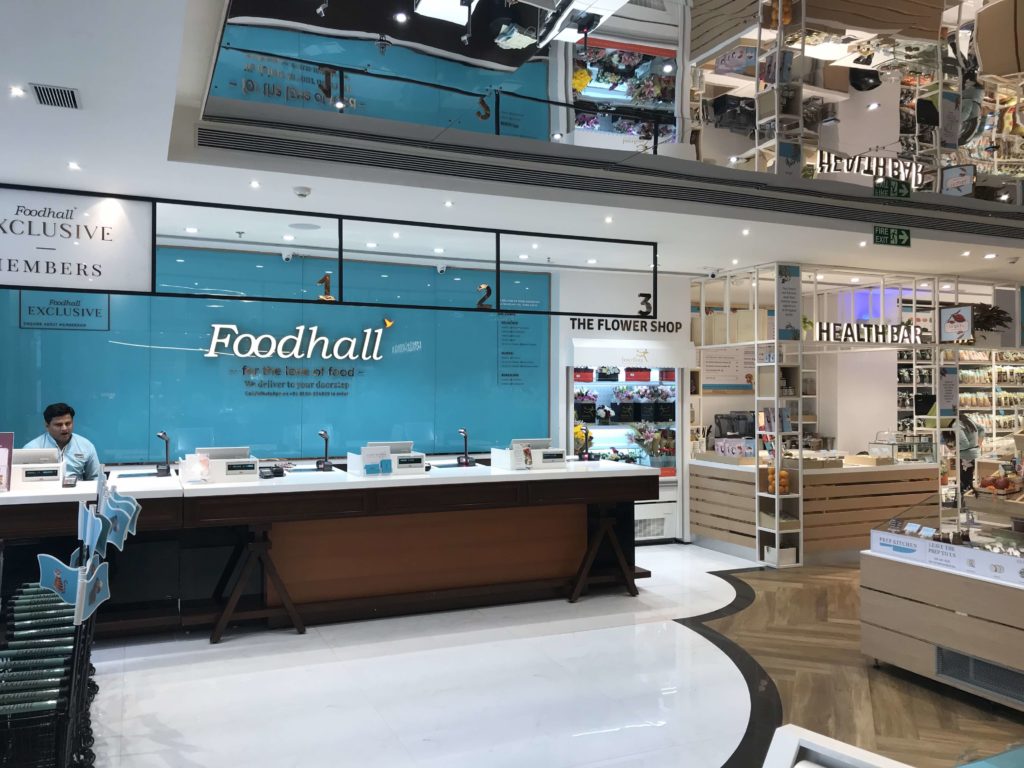
The store we visited, the concept’s largest, opened in December of last year. It’s a 25,000 square foot space, in Bandra, an upscale suburb of Mumbai. It caters to the wealthy class of Mumbai; the prices are beyond the reach of the average Indian consumer. Here you will see the occasional sari on a middle-aged woman, but more often than not, torn jeans, t-shirts and Apple Watches, is what the young and old are wearing.
At it’s core, it’s a grocery store. But it attempts to push well beyond that idea. This particular site has 4 stories and a basement. Full assortment of fresh fruits and vegetables, packaged goods and cooking related general merchandise. Sprinkled through the store are little bars or stations, some with seating, where you can get smoothies, coffee, teas, fresh baked goods and confections. Shopper enter at ground level and are met by a full assortment of fresh items, a health bar, bakery and checkout.
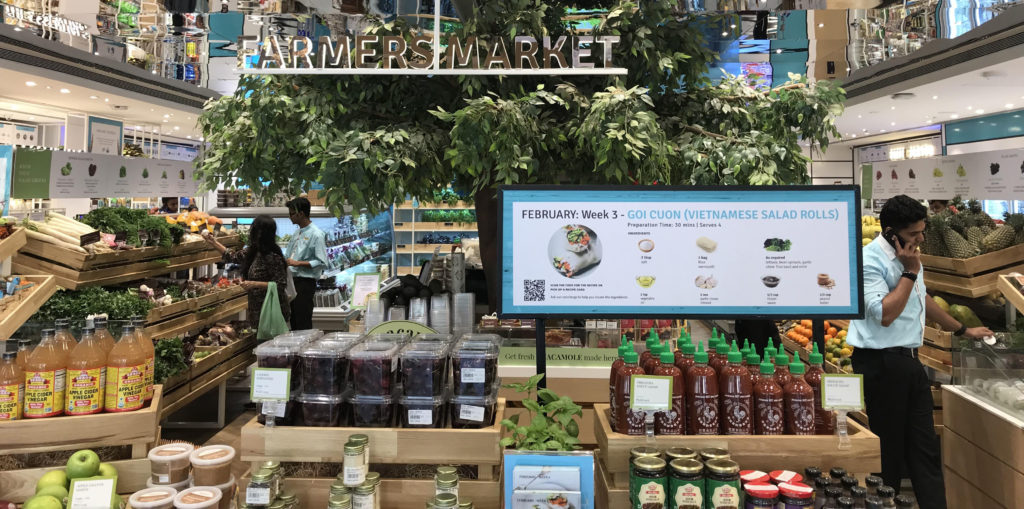
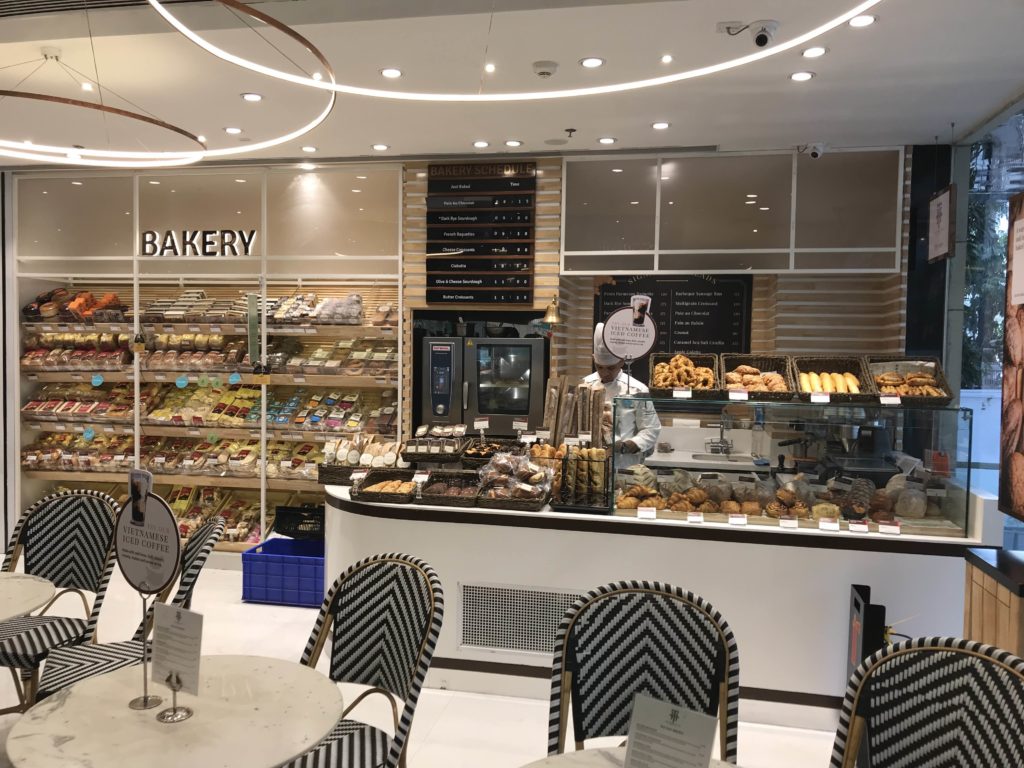

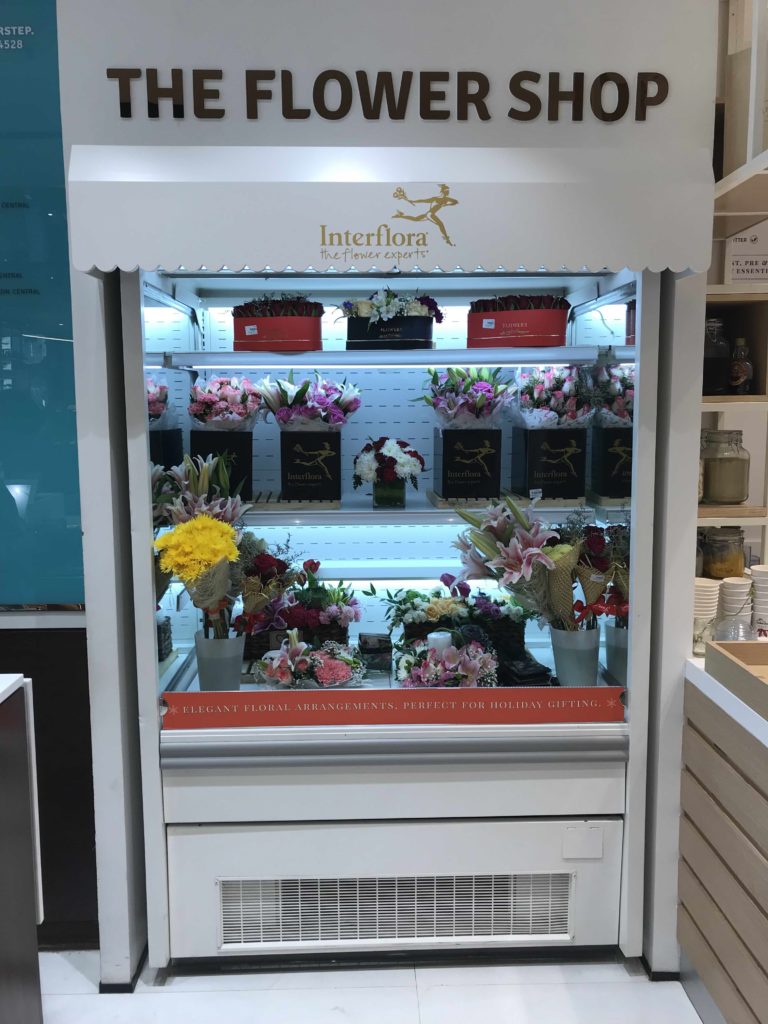
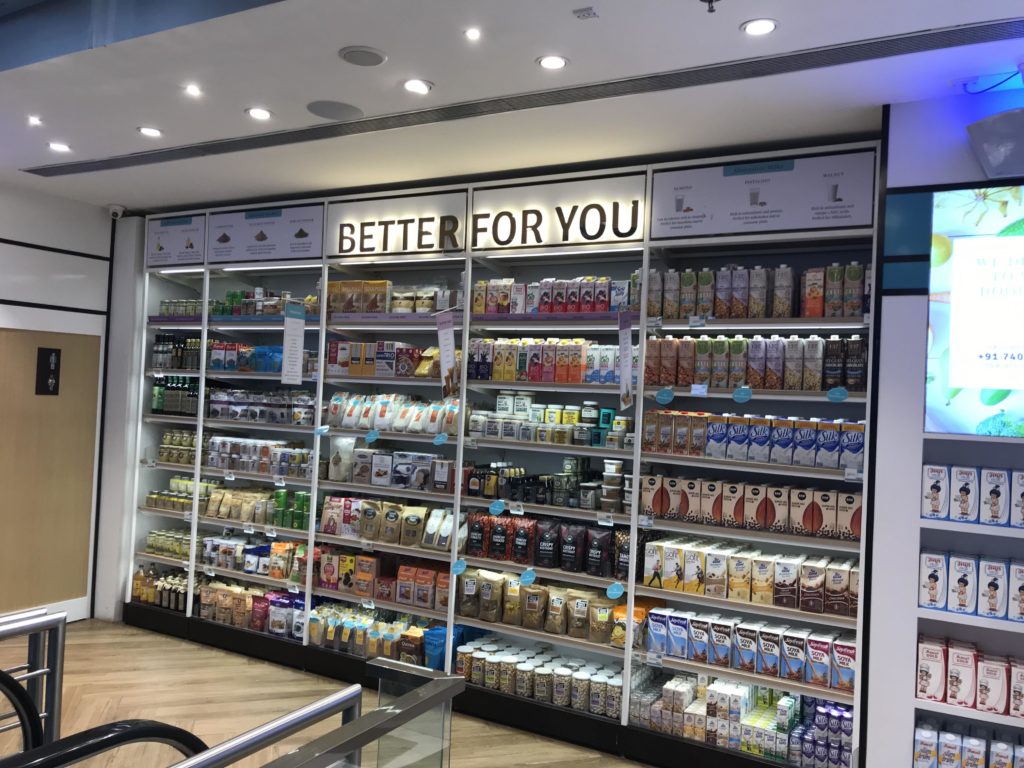
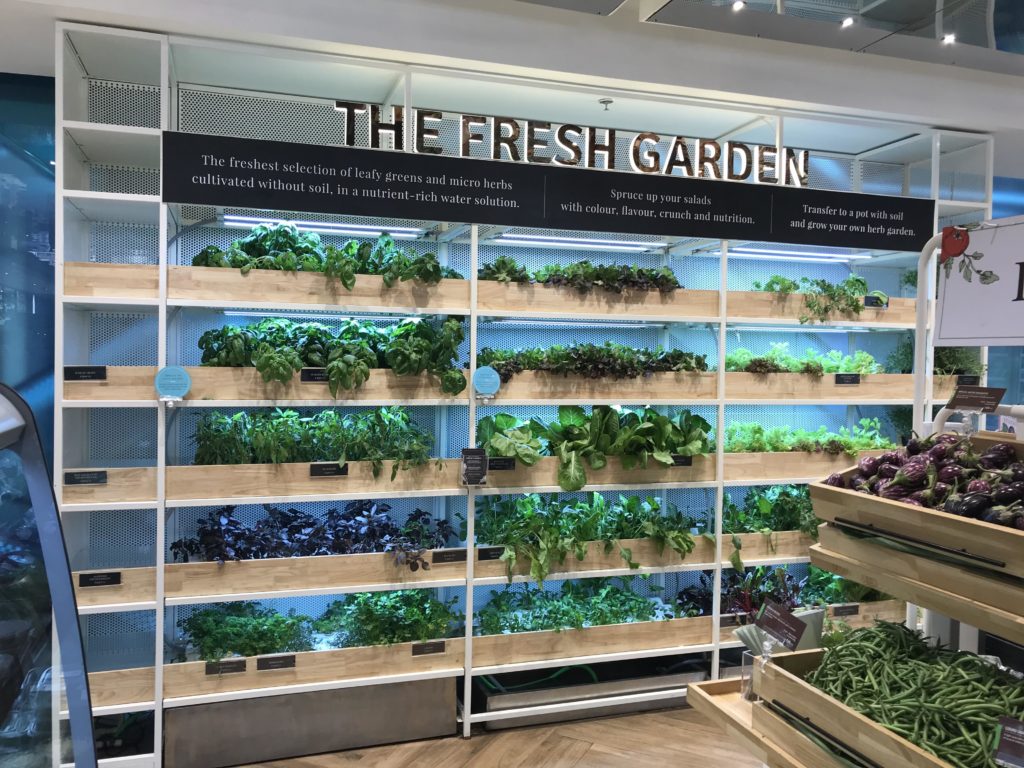
The 2nd floor is a mix of food, bars and housewares. There’s a cool little Coffee Bar with Indian coffee varieties and specialty ways of brewing, including a Japanese method. You can buy coffee to drink on the spot or beans to take home.
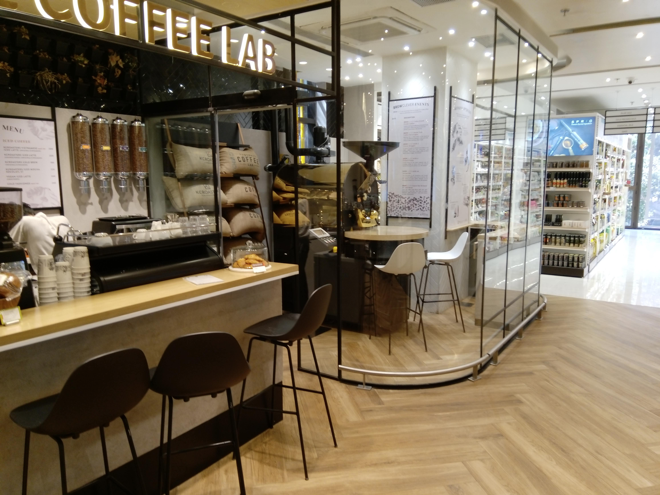
Around the corner from the Coffee bar are a Tea bar, Sweets bar and more typical rows of gondolas of grocery items. They have wide assortments of honey, jams, teas and some traditional western snacks.
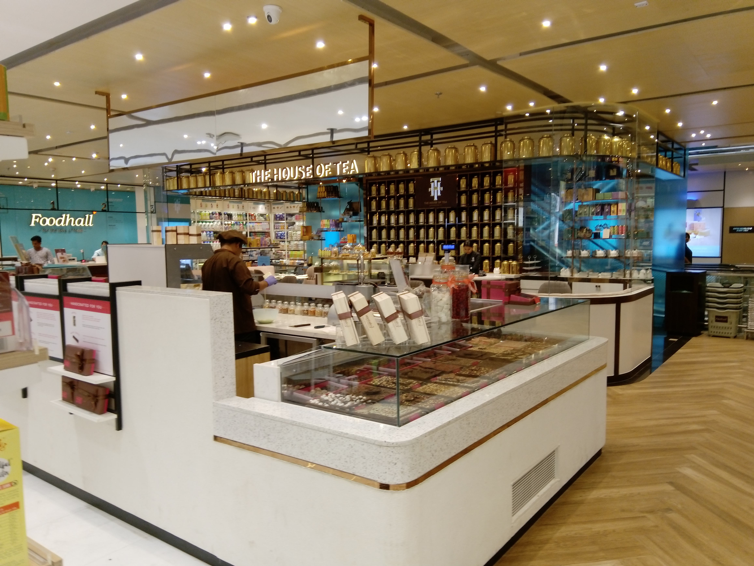
On the 3rd floor are a full restaurant and an industrial kitchen used for cooking classes. The schedule for the cooking classes seemed chock full of great meal ideas. Shoppers can sign up and show up for the lesson.
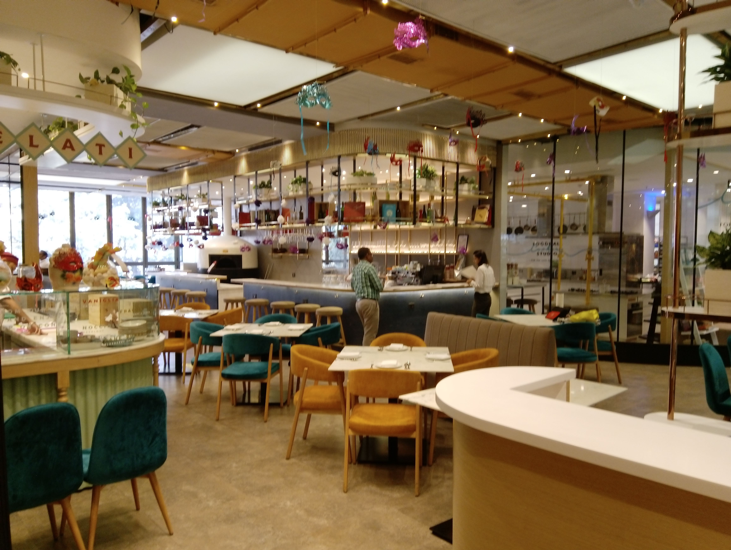
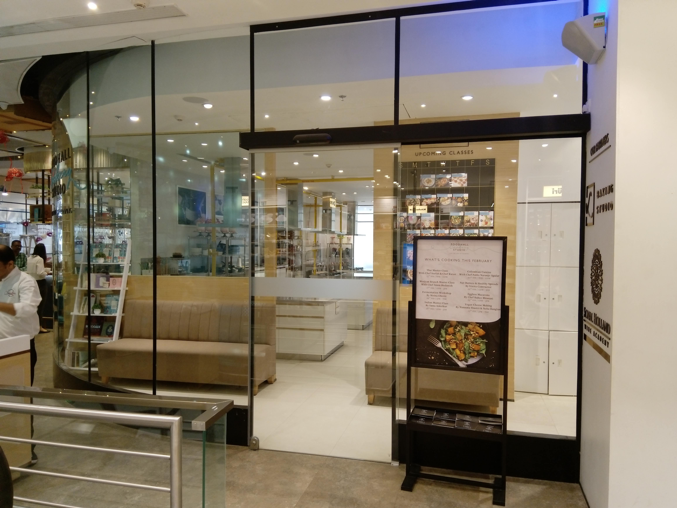
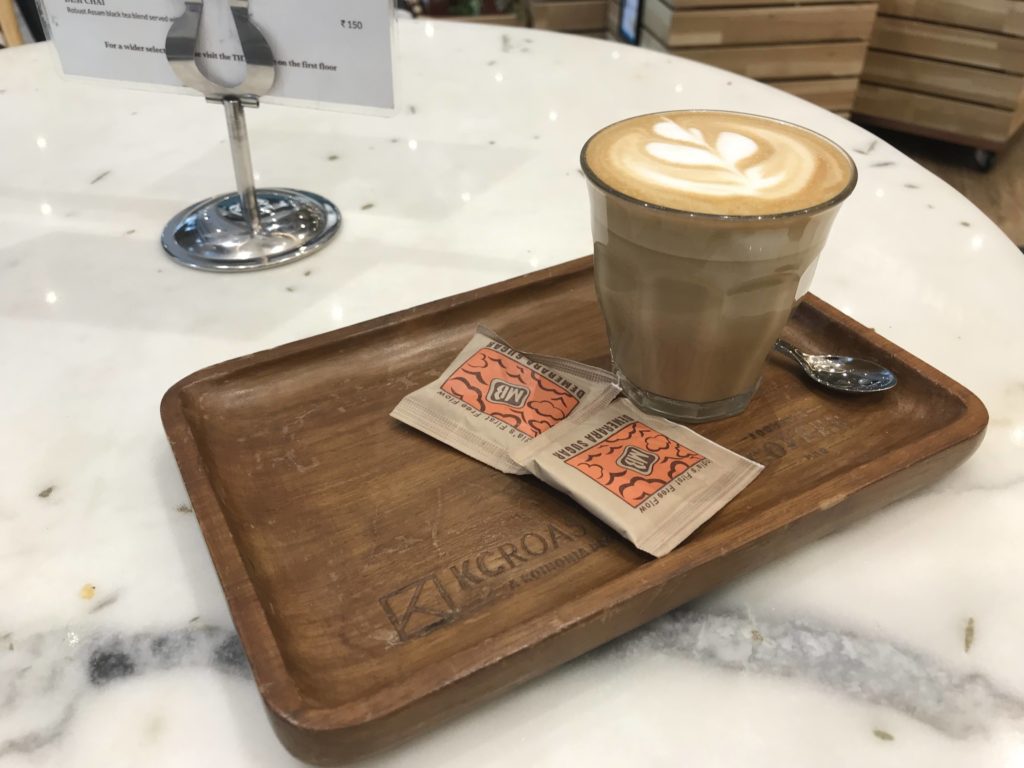
Retailers in the U.S. should take notice, while Foodhall doesn’t get it perfect, it’s one of the better attempts we’ve seen toward this blend of grocery and experience. Eately is less everyday and Whole Foods and others with dining are too grocery. We are excited to see what Future Group can do on future iterations as they refine the concept.
The day after shopping this store we met an old friend who is well connected in Indian retail. He mentioned “a team from Amazon” had just visited the store. And suddenly a recent announcement made sense. This is another move in India by Amazon. Last year they bought More, (a concept I worked on). Oh..and maybe the good people at Kroger were there too, with today’s announcement, who knows.
Our team walked away with inspiration and new ideas that we’ve undoubtedly brought to clients since the trip. We always think it’s a great use of time and resources to take a road trip and find some inspiration! Stay tuned for thoughts from our next adventure.
If you have any comments or questions, send me a note: [email protected].
“Pack your bags, we’re going to Disney!”…imagine that being echoed through the executive offices of retailers in America.
In the paragraphs below, I’m going to tell you why I think a visit to Disney is what all retail leadership teams should take. My wife and I took our two boys to Disney two weeks ago. My trip was by far the best omnichannel experience I’ve ever had, globally. Writing that feels really odd, almost embarrassing. But I can’t help to know it’s true. Sure there are brands that come close to doing omnichannel relatively well; Delta, Sephora, and sort of Starbucks to name several. [And probably others in China except my Alipay and WeChat won’t work for payment there $%^!].
Back to Disney. We stayed on property and over the course of a week visited Magic Kingdom, Hollywood Studios and Epcot. I hadn’t been to Disney since I was 10. And despite Disney being Expensive and Exhausting, our Disney experience was fun and brilliant in so many ways.
My first peek into the omnichannel world of Disney was when I downloaded the app and connected it to my wristband (I chose yellow of course) profile. For those of you who have not been to Disney recently, their wristband is a comfortable bracelet that is your ticket to the park, and much more. We pulled up to our hotel and went right to our hotel room, bypassing the lobby and check-in desk. We gained entry to our room by placing one of our Disney wristbands up to the door lock pad of our room. At that moment a little part of me shifted from dad on vacation at Disney to consultant Dad, absorbing, evaluating and thinking how my experiences can help our clients.
The two things you need to survive at Disney are your phone with the Disney app and the Disney wristband. Using your wristband you can open your hotel room door, check in for your Fastpass (expedited) ride line and buy anything in the park. Imagine the hassle of grabbing your wallet or Apple Pay on your phone every time you want to buy something, no sweat, Disney solved for it.
Through the app, you can order meals ahead of time, picked up with very little lead time necessary. You can adjust your Fastpasses, accelerating your wait time considerably. And you can self guide around the park.
Tied to your wristband is a sophisticated security system, tracking you throughout the park. We saw this in action when we were going through the Epcot entrance. Our nine year old forgot which finger he scanned and was having trouble with the system syncing up (when you enter the park they match your wristband with your fingerprint). A Disney employee quickly came up, and showed him a photo of himself entering Magic Kingdom scanning his right finger. He scanned his finger and into Epcot we went.
“Digital” hits the physical world in other ways at Disney. Small things like custom designing a car at the Test track or creating an interactive content.
Though I had many takeaways from my Disney experience, below are the big ones:
(1) Disney senior leadership clearly values looking at the Disney experience truly holistically. This view and subsequent experience strategy is undoubtedly then filtered down into tactics that actualize the experience they are trying to create.
(2) If there are corporate silos across physical experience design, digital experience and marketing at Disney parks, they do a great job of not letting the guest see them. There are no seams in this experience, it’s all fluid.
(3) The efforts don’t seem to follow the shiny flash object syndrome embraced by so many retailers. Each and every thing I experienced served a value, whether noticeable to guests or not.
Was it perfect? No, but it was pretty darn close. I didn’t notice anything related to our journey through an “omnichannel” lens (based on technology that is currently in-market today) that could have been better, Disney was really fun. We’ll go back once my kids have jobs and can support their own souvenir addiction.